PLU professor curates an Oxford Univ. museum collection at the intersection of religion, medicine and disability
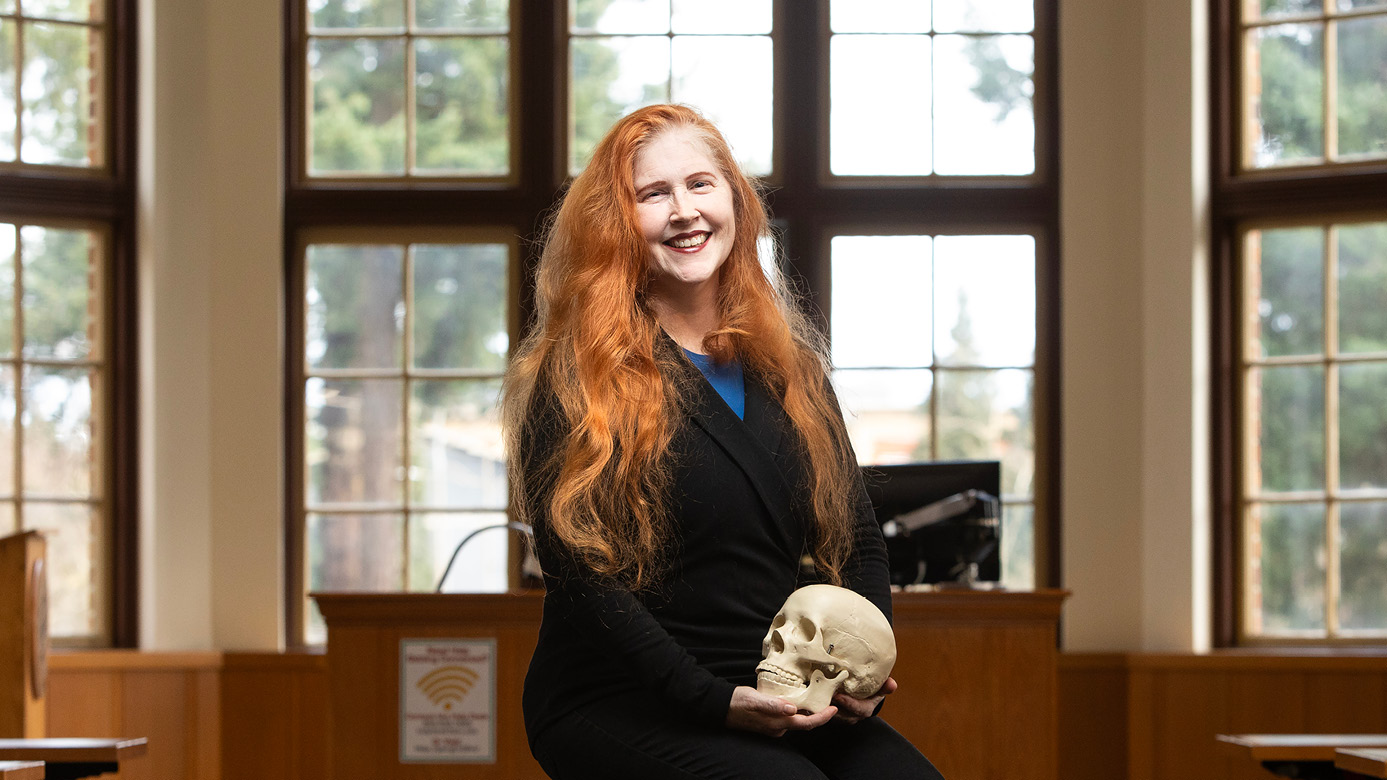
Image: Brenda Llewellyn Ihssen is an associate professor of early and medieval Christian history at PLU. (Photo by Sy Bean/PLU_
By Lora Shinn
PLU Marketing & Communications Guest Writer
In April 2023, PLU religion professor Brenda Llewellyn Ihssen, Ph.D., attended the Natural History Museum Late Night with PLU students at the University of Oxford. At Late Night events, the Museum of Natural History and Pitt Rivers Museum host tours and various evening activities offered by researchers, creatives, and staff.
Llewellyn Ihssen noticed an upcoming talk on disability in the museum. Little did she know that her observation would lead to her contributing to a permanent collection and being appointed an academic fellow at the Pitt Rivers Museum, part of the University of Oxford system.
Faith and Fiction
Llewellyn Ihssen’s contribution relies on decades of experience in intersections of religion, disability, health, and healing. An associate professor of early and medieval Christian history at PLU, Llewellyn Ihssen is the program director of IHON-Oxford. Llewellyn Ihssen uses critical disability theory in her work on ancient, late antique, and medieval religious texts.
After earning an undergraduate degree in English literature and secondary education, Llewellyn Ihssen worked in special-education classrooms. Yearning to explore how deep currents of religious themes shape great literature, she returned to college to earn a Ph.D. in history and historical theology.
Originally from the Pacific Northwest, Llewellyn Ihssen began teaching at PLU in 2005 as an adjunct professor. Many of her courses focus on the intersection of medicine, economics, social ethics, and religion — a favorite course was “Health and Healing in Christian History.”
Religious philosophies and theologies “shape people’s ideas of the body, and care of the body, whether theirs or someone else’s, in both good and bad ways,” she says. In recent years, religious beliefs have argued for or against COVID-19 vaccination or for or against end-of-life decisions.
PLU students planning on going into health often enroll in this class. “If you can understand how religious ideals shape decision making, it can help you be more sympathetic to patients in moments of crisis,” Llewellyn Ihssen says, and more empathetic versus simply dismissing decisions based on religious thinking as ignorant.
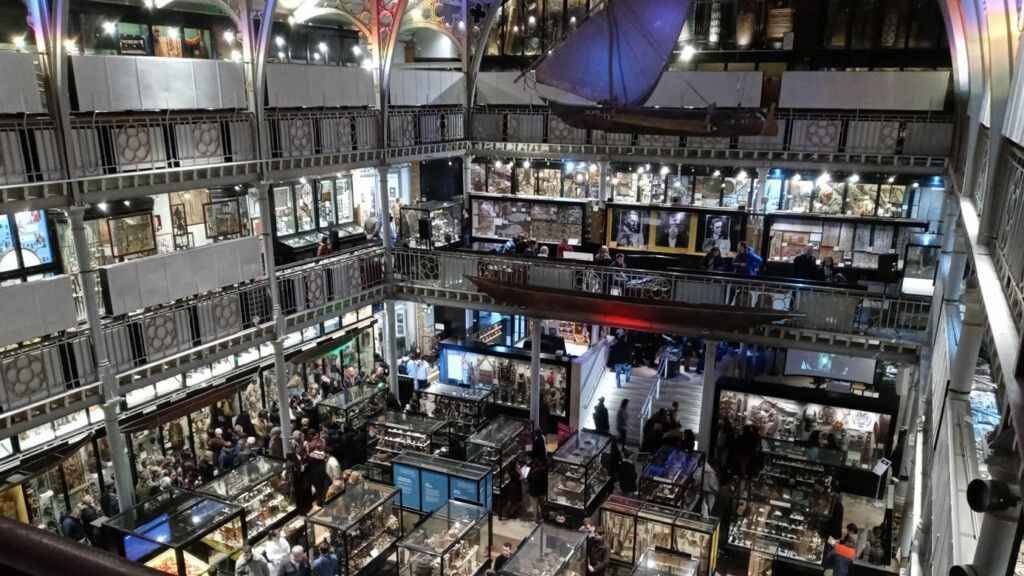
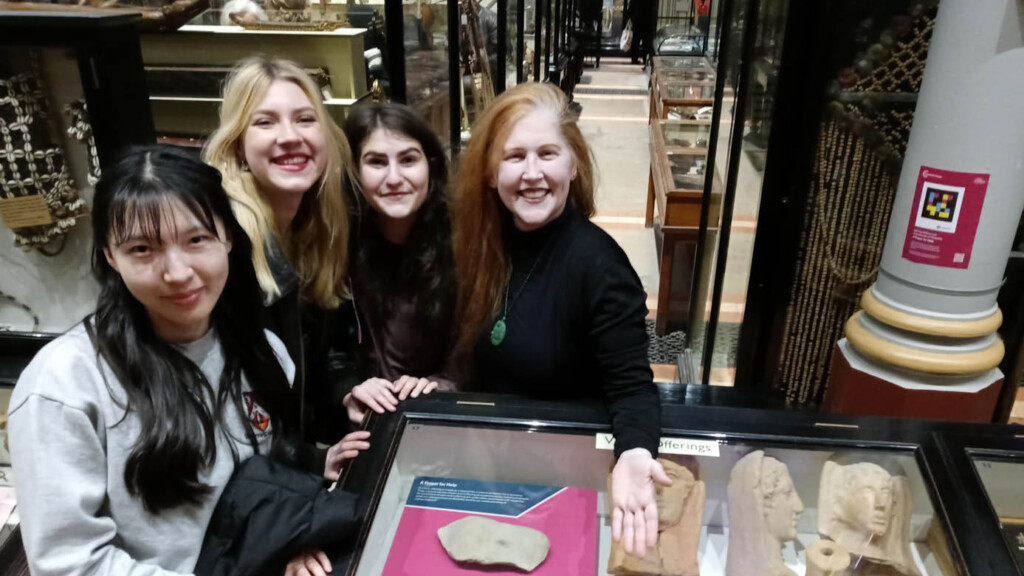
A Project Unfurls
At the disability talk in the spring of 2023, Llewellyn Ihssen connected with those producing “Nothing Without Us,” a six-stop gallery trail at the Pitt Rivers Museum, part of the University of Oxford’s Gardens, Libraries and Museums collection. Pitt Rivers Museum is famous for its variety. “The first impression is of a chaotic mess, and it looks like a jumble sale of artifacts,” Llewellyn Ihssen says. “It’s so jam-packed, it’s hard to take it all in, but it’s also brilliant.”
Nothing Without Us was sponsored by the Curating for Change project, which creates career pathways for Deaf, disabled and neurodiverse museum curators in more than 20 local, regional, and national museums in England. Curators help reinterpret museum collection items and produce virtual and physical exhibit spaces to explore disabled people’s histories.
The project aims to highlight the contributions of disabled individuals in the community and history. “When people look at painting or artifact, rarely do they think about disability,” Llewellyn Ihssen says. “But if you have those who identify as disabled as part of the curatorial process, there’s a new lens of curation for museum items.”
In addition, people with disabilities can offer assistance in making a museum space more equitable and accessible. For example, display cases might come with audio recordings for the neurodivergent and braille for the blind.
“Although not a permanent resident nor identifying as disabled — though I have a hidden disability — I was fully welcomed to participate in the program,” she says. “I was never made to feel like an outsider.”
She curated her items through the lens of critical disability studies. “Museums globally are asking questions about objects they have that were stolen or donated,” she says. “Museums are asking important questions about whether those objects should be there, what to keep or return. With some objects that can’t be returned, the museum’s decolonization process requires looking at objects differently and asking different questions.”
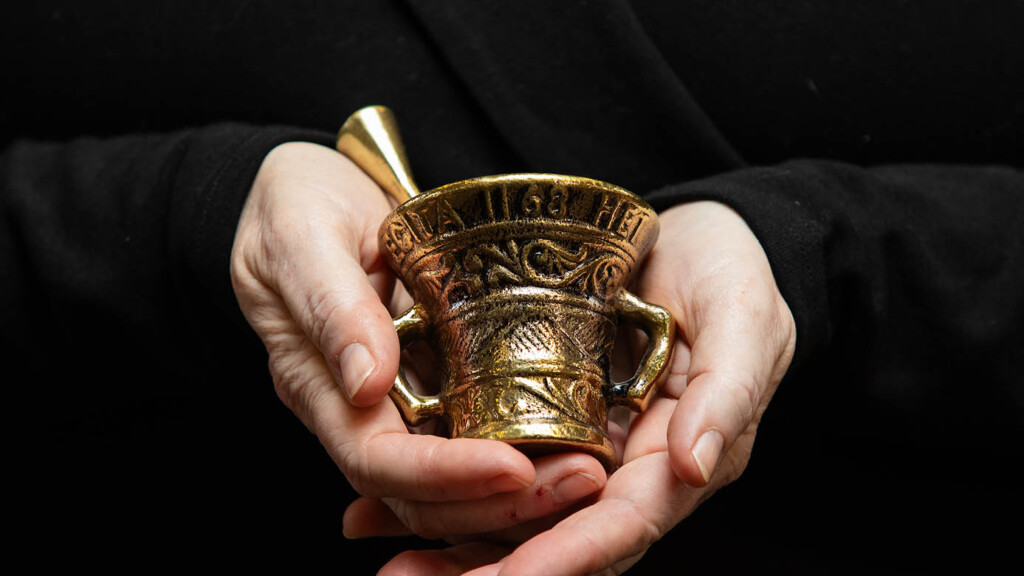
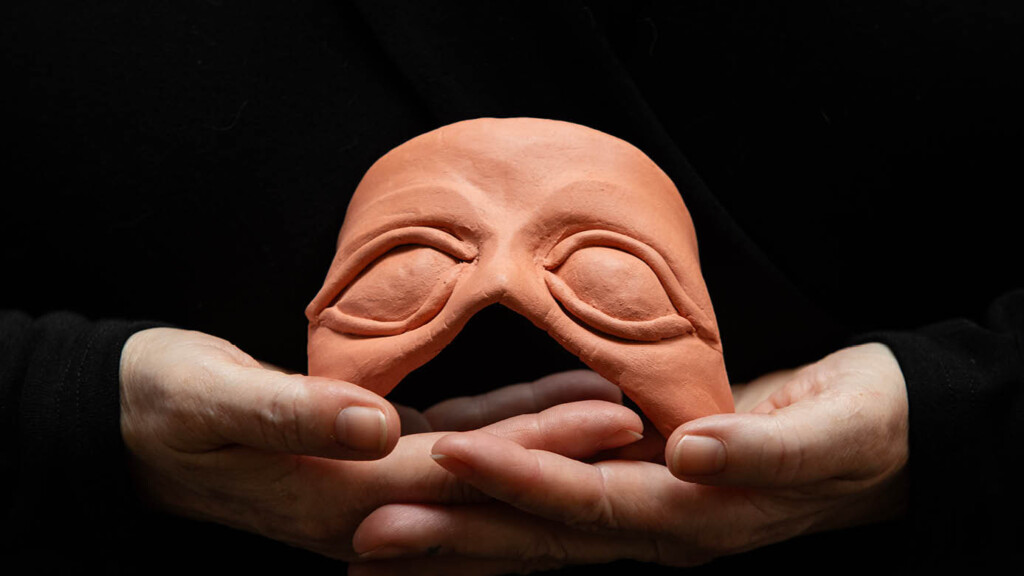
Case Studies
In the fall of 2023, visitors began to stop by the museum to view the exhibit’s cases throughout the museum, including Llewellyn Ihssen’s cases.
As an academic who primarily writes for peers, she found it interesting to learn to share knowledge with a new audience—the casual museum visitor without a background in religion, ancient history, medical history, or disability studies.
The case “Surgical and Medical Implements” examines one of the world’s oldest surgeries, trepanning — which scrapes, bores, or cuts into a skull for any number of medical or religious reasons. The case included an iron and wood surgical instrument from Algeria for trepanning. Evidence of cranial operations dates back at least 7000 years, she notes. Surgery evidence has been found in pre-Columbian Mesoamerica, Africa, Asia, and Europe.
“This curation project asks questions about who is being trepanned and why,” she says. Trepanning wasn’t designed to kill but to help those with headaches or head injuries by relieving pressure or pain. But the practice was also applied to “release evil spirits” or “a stone of madness” from those who were injured or mentally ill, which we would today understand perhaps more correctly as neurodivergent or intellectually disabled.
The modern revival version arrived in the form of lobotomy, a surgery that continued into the 1970s as a method of attempting to “fix” individuals whose behavior seemed to deviate from the norm or those who were intellectually disabled.
“The physical harm or emotional harm that is done to one person can also disable entire families and households and communities,” she says. One of her works’ broader themes is “how we harm or cultivate community, what do we do to each other, and how does that play out?”
A second case titled “Votives” examines how votives provide insight into ancient experiences of pain and suffering and how various conditions led to disabling effects. Ancient Roman terracotta pottery votives in the form of a woman’s breast were donated to the Pitt Rivers Museum in 1896.
Breast cancers were noted frequently in Greek and Roman texts, along with abscesses and inflammatory mastitis, she notes. For example, a votive of a female breast might be evidence of a request for help for breast cancer, prayers for lactation to feed the supplicant’s child or a child she wet-nursed for pay.
This case encourages visitors to think about disability through a wider lens—not just one person’s disabled body, but how disease or illness can disable an entire family system or community. A woman’s breast cancer could lead to physical pain and an attempt at removal—which might also then lead to an infant’s malnourishment or lack of employment if the woman worked as a wet nurse.
Major events to celebrate the new work included November 24, 2023’s Night at the Museum event. In a full-circle experience, Llewellyn Ihssen was one of the evening’s key speakers.
Evening photos of Llewellyn Ihssen’s beaming, radiant face demonstrate her joy and thrill at the experience of transforming “problematic space” as she applied experiences and knowledge to increase access. “Museum visitors received it well, which was meaningful for me,” she says. The now permanent collection in this Oxford museum will continue sharing Llewellyn Ihssen’s knowledge half a hemisphere away.


